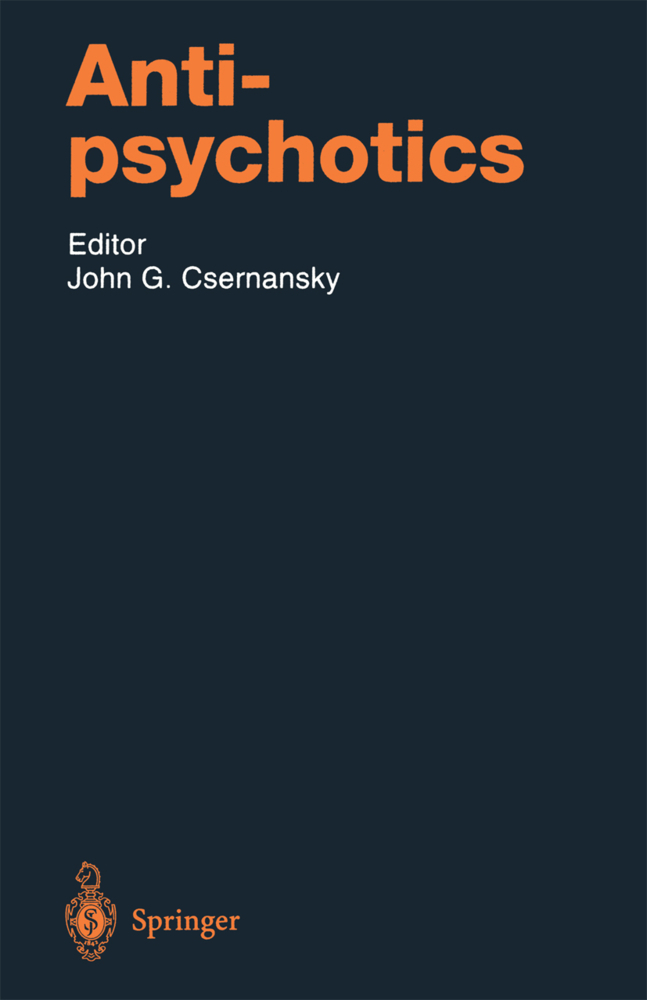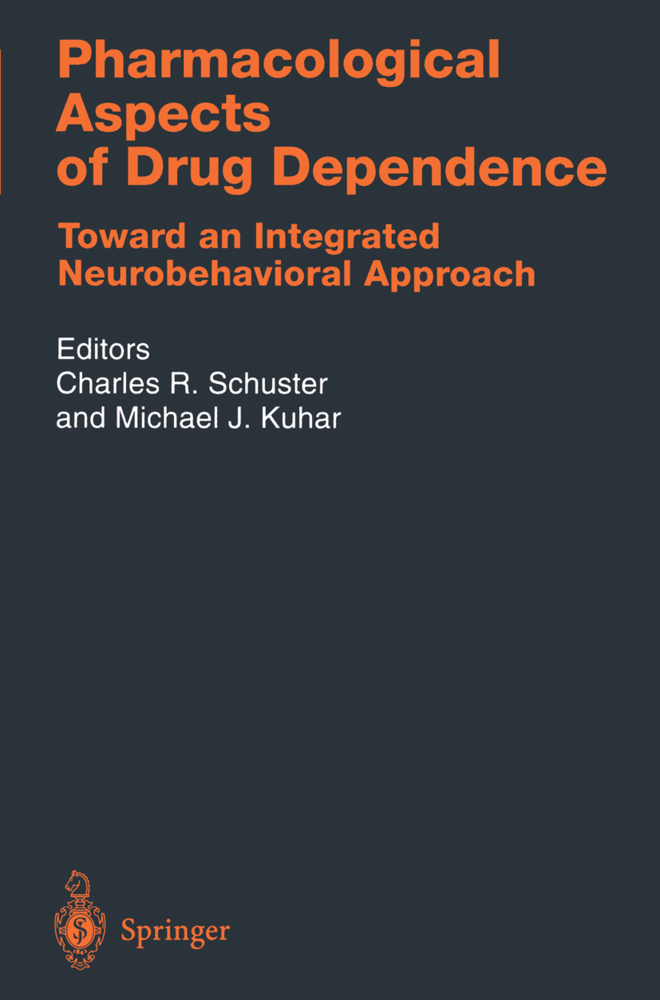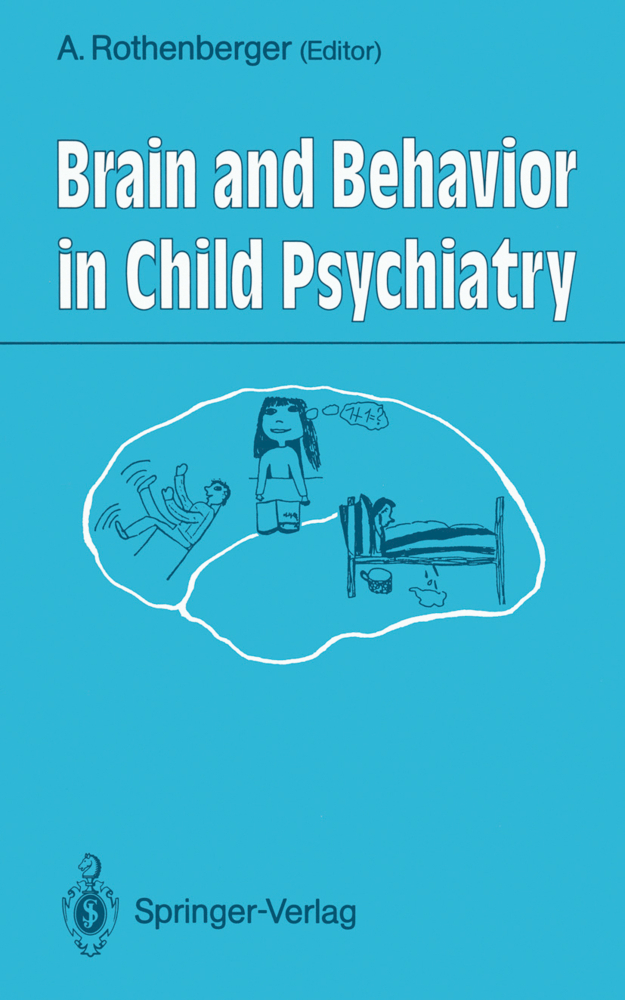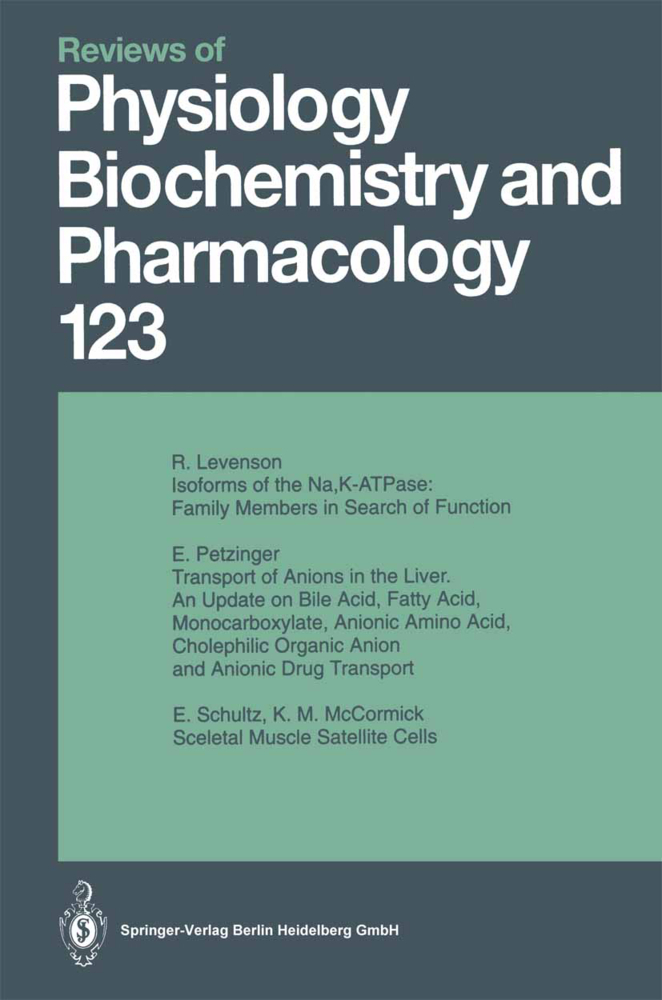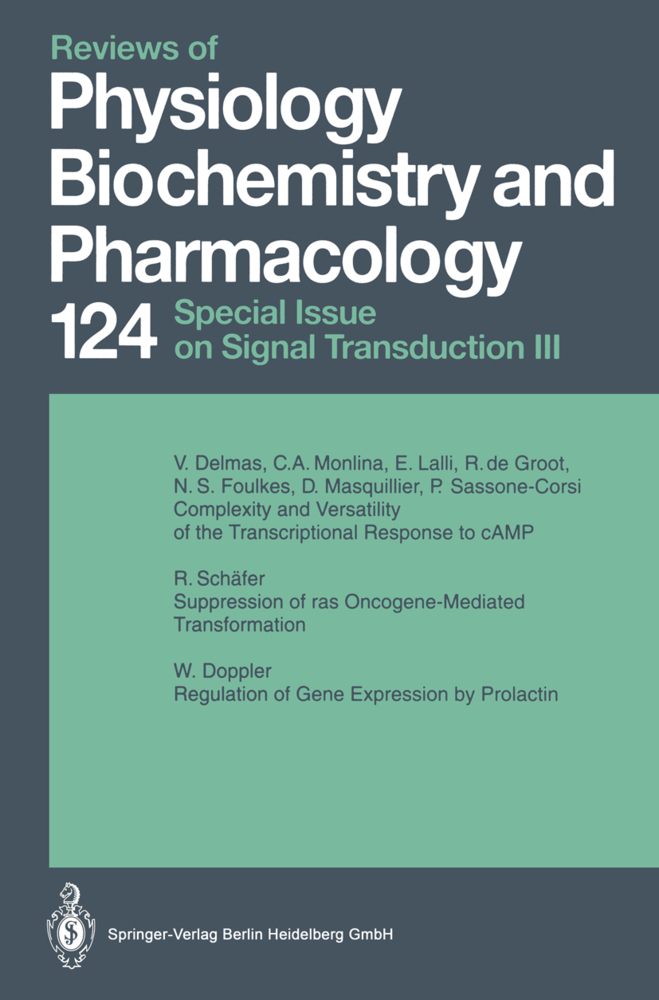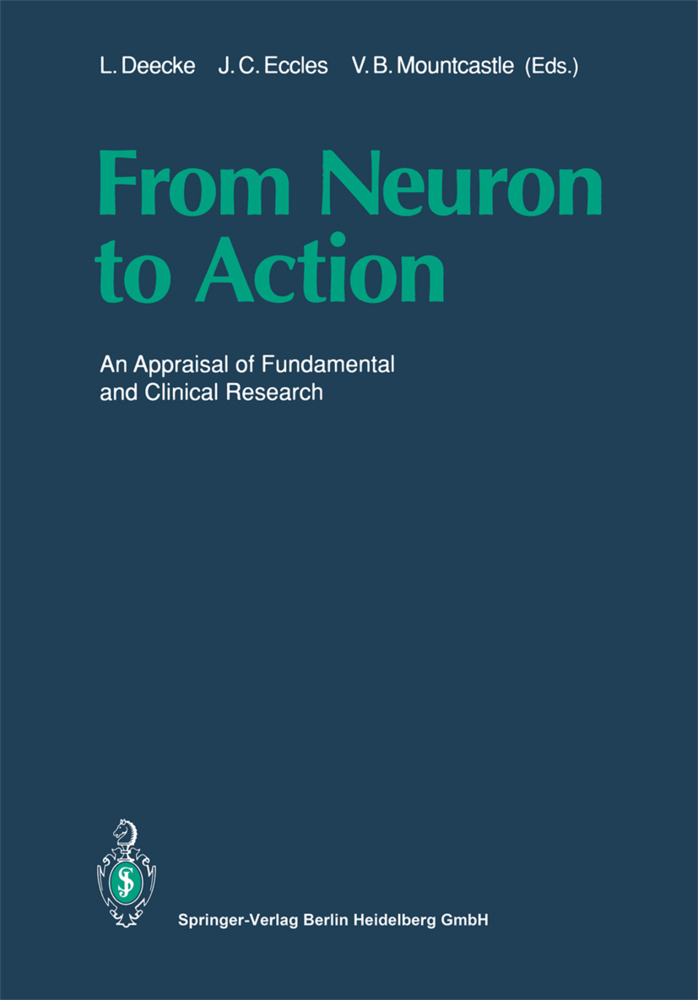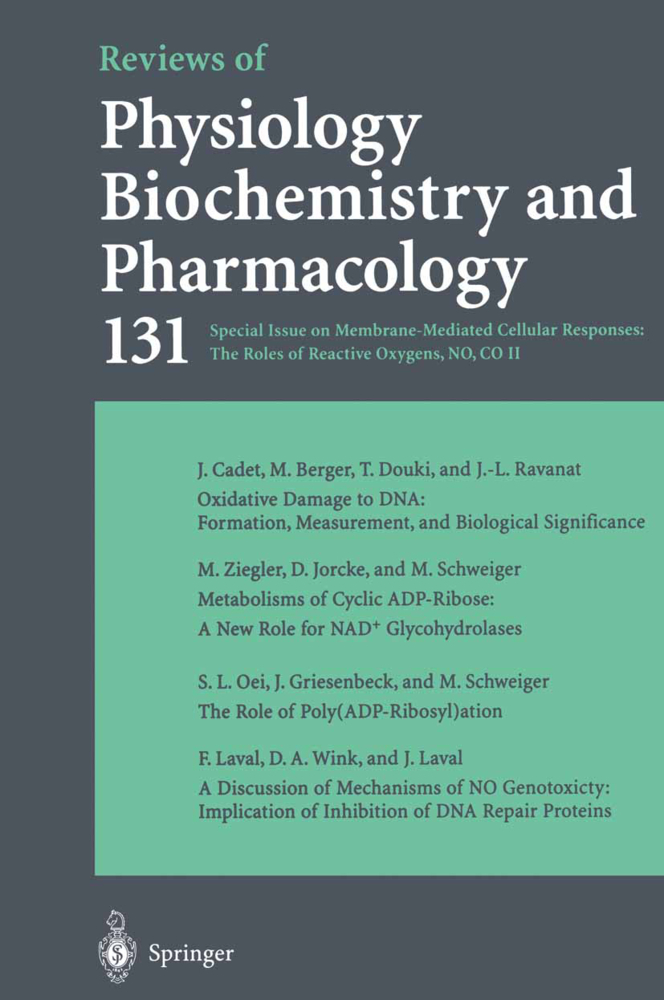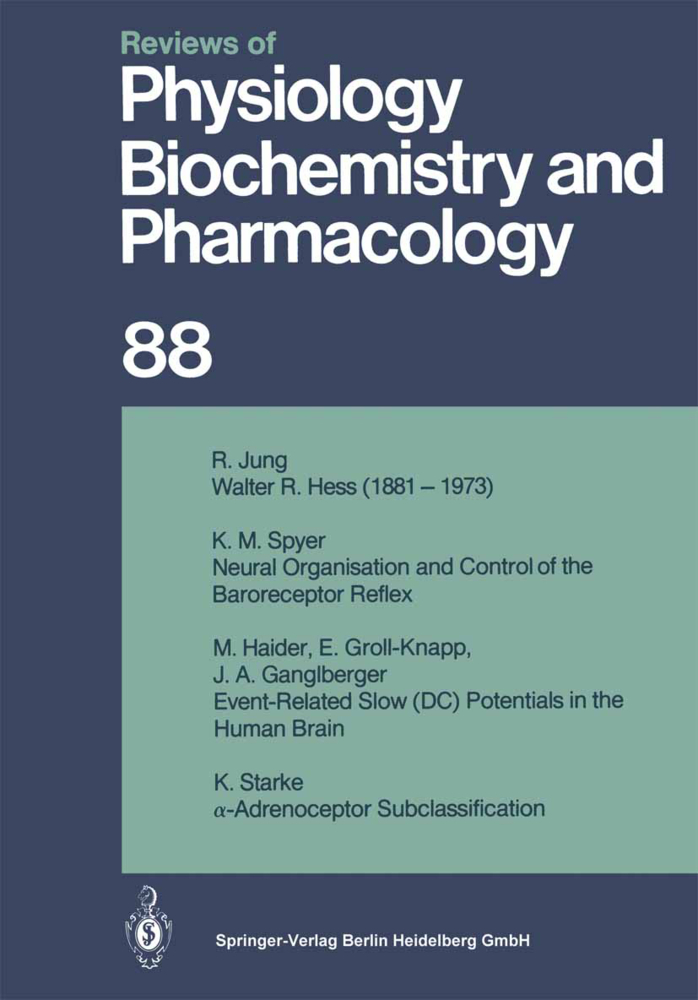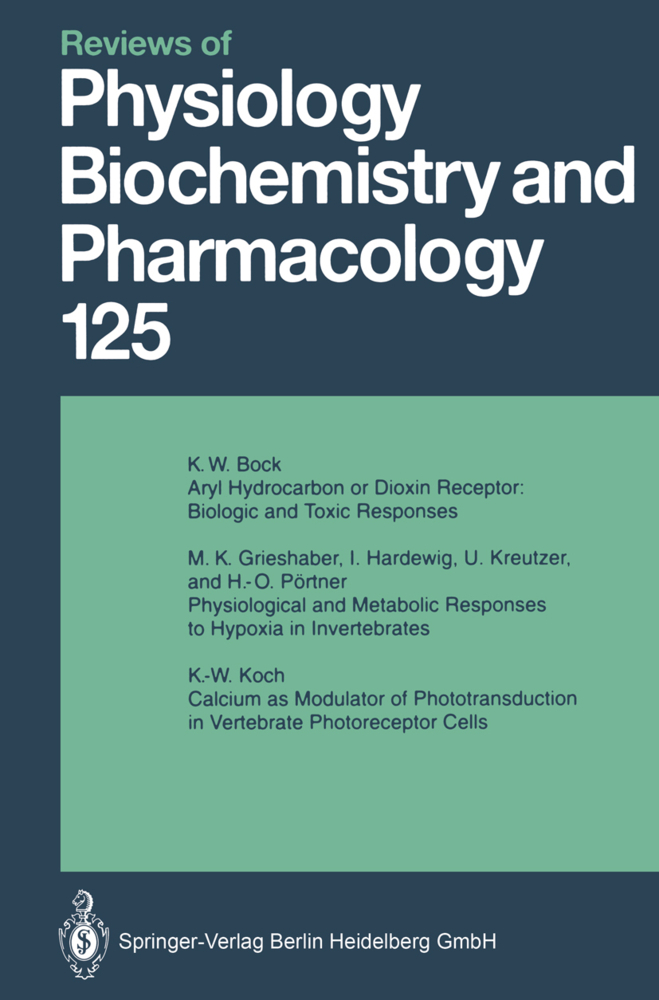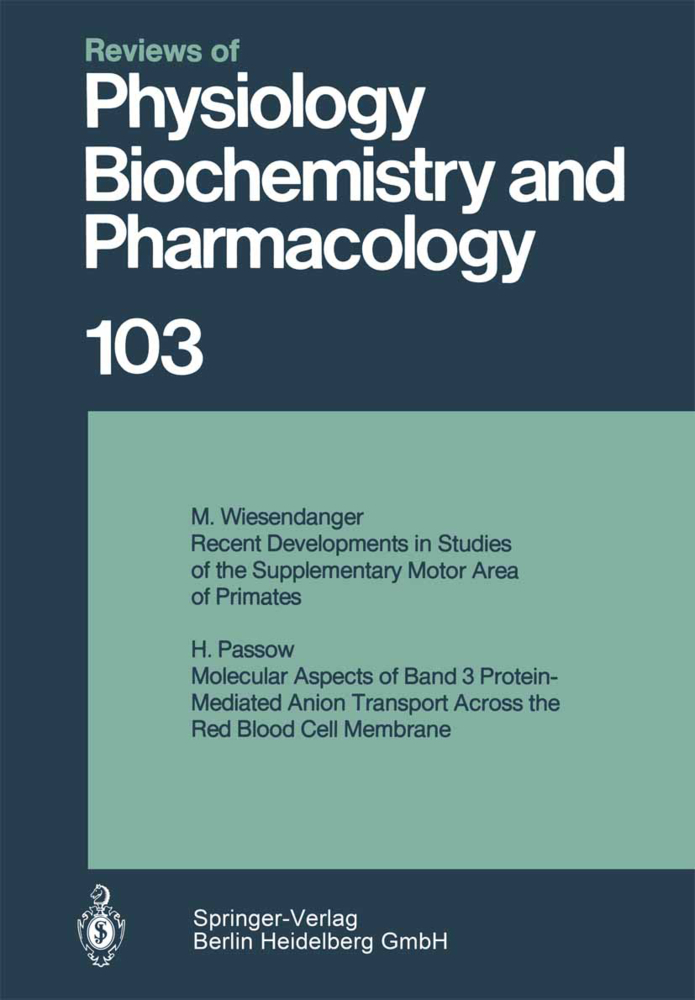Antipsychotics
Antipsychotics
Antipsychotic drugs were first discovered in 1953, and not since the late 1970s has the Handbook of Experimental Pharmacology taken up this topic. A new treatment of this topic would be due under any circumstances; however, this is now particularly true, since remarkable progress has been made on several fronts in furthering our understanding of the mechanisms of antipsychotic drug action. First, we have learned that schizophrenia is an illness with particu lar neuroanatomical abnormalities, many of which suggest that the illness is caused by errors in neurodevelopment. These findings have helped to form a context for understanding neurochemical aberrations in the illness and suggest new approaches for pharmacological treatment. Propelled forward by rapid advances in neurochemical anatomy, current pathophysiological hypotheses of schizophrenia and antipsychotic drug action have taken on the appearance of complex electrical circuit diagrams. Second, molecular biology studies have now revealed that there is a multiplicity of dopamine receptors (i. e. , D , DZshort' j DZlong, D , D , and D ), some of which may become entirely new targets for 3 4 s antipsychotic drug action. Ironically, the development of drugs that are selec tive for these receptors and that can be used to investigate their function lags behind; yet the discovery of these new receptors offers unparalleled opportu nities for developing drugs with improved efficacy and fewer side effects.
I. Historical Perspective
B. Classification by Patterns of Efficacy and Neurological Side Effects
C. Classification by Chemical Structure
I. Phenothiazines
II. Thioxanthenes
III. Butyrophenones
IV. Diphenylbutylpiperidines
V. Indoles
VI. Benzamides
VII. Dibenzapines
VIII. Others
D. Classification by Potency and Nonneurologic Side-Effect Profile
E. Classification by Pharmacological Mechanism
I. Selective Dopamine Receptor D2 Antagonists
II. Combined D2/D3 Antagonists
III. Combined D2/D1 Antagonists
IV. Combined 5-HT2-D2 Antagonists
F. Future Classification Schemes
I. Selective Serotonin Receptor Antagonists
II. Partial D2 Agonists
III. Sigma Site Antagonists and Excitatory Amino Acid Agonists
IV. GABA-Mimetics and Partial Benzodiazepine Agonists
G. Conclusions
References
2 Molecular Models and Structure-Activity Relationships
A. Introduction
B. Structure-Activity Relationships of Antipsychotic Drugs
C. Neurotransmitter Receptor Models
D. Molecular Modelling of Drug-Receptor Interactions
I. Electrostatic Fields Around Drug and Receptor Molecules
II. Molecular Dynamics of Drug-Receptor Interactions
E. Conclusions
References
3 Interaction of Antipsychotic Drugs with Dopamine Receptor Subtypes
A. Introduction
B. Molecular Biology of Dopamine Receptor Subtypes
I. General Structural Features of Dopamine Receptors
II. The D1 Family of Dopamine Receptors
1. The Dopamine D1 Receptor
2. The Dopamine D5 Receptor
III. The D2 Family of Dopamine Receptors
1. The Dopamine D2 Receptor
2. The Dopamine D3 Receptor
3. The Dopamine D4 Receptor
C. Pharmacology of Neuroleptics at Recombinant Dopamine Receptors
I. Traditional Neuroleptics and Related Compounds
II. Clozapine and the Atypical Neuroleptics
III. New Antipsychotics
1. Olanzapine: A Second-Generation Clozapine-Like Compound
2. Remoxipride: A D2 Receptor-Selective Substituted Benzamide
3. Risperidone: A D2/5-HT2 Receptor Antagonist
D. Future Outlook and Hopes for Subtype-Specific Drugs
References
4 Atypical Antipsychotic Drugs: Clinical and Preclinical Studies
A. Introduction
B. Glutamate
I. Glutamate Receptors
II. Glutamate Hypothesis of Schizophrenia
III. Glutamatergic Drugs
1. Glycine and Milacemide
2. Umespirone
3. Others
C. ?-Aminobutyric Acid (GABA)
I. GABA Receptors
II. GABA Hypothesis of Schizophrenia and Clinical Studies of GABA-ergic Drugs
D. Acetylcholine
I. Acetylcholine Receptors
II. Muscarinic Hyperactivity in Schizophrenia? -
E. Norepinephrine
I. ?1-Adrenergic Receptor Involvement in Atypical Antipsychotic Drug Actions
F. Cholecystokinin (CCK)
I. CCK-ergic Drugs
1. LY262691
2. Caerulin
3. Others
G. Neurotensin
I. Neurotensin and Schizophrenia
II. Effects of Atypical Antipsychotic Drugs on Neurotensin Systems
H. Sigma Receptors
I. Sigma Receptors
II. Preclinical Studies
III. Specific Agents
I. Opioids
J. Serotonin
I. 5-HT Receptors and Schizophrenia
II. Selective 5-HT2A/2C Antagonists
1. Ritanserin
2. ICI169369 and MDL100907
3. Mianserin
III. Mixed 5-HT2/D2 Antagonists
1. Clozapine
2. Risperidone
3. Melperone
4. Olanzapine
5. Amperozide
6. Fluperlapine
7. Tiosperone
8. Zotepine
9. Others
IV. 5-HT3 Antagonists
V. Nonselective 5-HT Receptor Antagonists
VI. 5-HT Reuptake Inhibitors
K. Conclusions
References
5 Sites and Mechanisms of Action of Antipsychotic Drugs as Revealed by Immediate-Early Gene Expression.-A. Introduction
B. Immediate-Early Gene Expression as a Method to Assess the Sites and Mechanisms of Action of Antipsychotic Drugs (APDs)
C. Effects of APDs on Immediate-Early Gene Induction in the Striatal Complex
I. Effects of APDs on Regionally Specific Striatal Immediate-Early Gene Expression
1. Dorsal Striatum
2. Ventral Striatum
II. Striatal Immediate-Early Gene Induction: Fos, Fos-Related Antigens, and Others
1. Fos Versus Fras
2. Other Immediate-Early Genes
III. Mechanisms of Antipsychotic Drug-Elicited Striatal Fos Expression
1. Dopamine Receptors and APD-Elicited Increases in Striatal Fos
a) D2 Dopamine Receptors
b) D1 Dopamine Receptors
c) Concurrent D2/D1 Receptor Occupancy and Striatal Fos Expression
2. Involvement of Excitatory Amino Acid Receptors in Neuroleptic-Elicited Striatal Fos Expression
3. Cholinergic and Adenosine Receptors
a) Muscarinic Cholinergic Receptors
b) Adenosine A2 Receptors
IV. Acute Versus Chronic Effects of APDs on Striatal Fos Expression
V. What Is the Transcriptional Target of APD-Elicited Striatal Fos Expression?
1. Neurotensin
2. Enkephalin
3. Glutamic Acid Decarboxylase
D. Preferential Induction of Fos in the Prefrontal Cortex (PFC) by Clozapine
I. Regional Effects of APDs on Fos Expression in the PFC
1. Effects of APDs on Fos Expression in the Medial PFC
2. Correlations Between PFC Expression and Clinical Status
II. Receptor Mechanisms of Clozapine-Elicited Increase in PFC Fos Expression
1. D1 and D2 Dopamine (DA) Receptors and Clozapine-Elicited Fos Expression
2. Nondopaminergic Receptors and the PFC Fos Response to Clozapine
3. Mechanisms of Clozapine-Elicited Increases in PFC Fos Expression
a) Possible Role of a Novel DA Receptor in Mediating Clozapine-Elicited Effects
b) Targeting of Multiple Receptors
c) Transsynaptic Events as a Possible Determinant of Clozapine-Induced Changes
III. Transcriptional Targets of Clozapine's Actions in the PFC
E. Effects of APDs on Immediate-Early Gene Expression in Other CNS Sites
I. Thalamic Paraventricular Nucleus
II. Lateral Septal Nucleus
III. Other CNS Regions
F. Conclusions
I. Methodological Issues
II. Validity of Fos Expression as a Model of the Actions of APDs
III. Future Directions
References
6 Basic Neurophysiology of Antipsychotic Drug Action
A. Introduction
B. The Dopamine Hypothesis of Schizophrenia
I. Antipsychotic Drugs as D2 Blockers
II. Shortcomings of the Dopamine Hypothesis
C. Acute Physiology of Antipsychotic Drug Action
I. Dopamine Cell Identification and Physiology
II. Acute Actions of Antipsychotic Drugs on Dopamine Cell Physiology
1. Acute Antipsychotic Drugs Increase Firing Rate
2. Acute Antipsychotic Drug Administration Increases Dopamine Cell Burst Firing
3. Acute Antipsychotic Drug Treatment Increase the Number of Dopamine Cells Firing Spontaneously
D. Physiology of Chronic Antipsychotic Drug Treatment
I. Tolerance to Antipsychotic Drug Action
II. Chronic Treatment with Antipsychotic Drugs and Dopamine Cell Depolarization Block
III. Analysis of Mechanisms Contributing to Depolarization Block: Compensatory Systems Involved in the Recovery of Function After Dopamine Lesions
E. Dual Mode of Dopamine Release: Tonic Versus Phasic
F. Antipsychotic Drug Treatment and Electrotonic Transmission Within the Basal Ganglia
I. Dopaminergic Control of Electrotonic Coupling in the Striatum
II. Effects of Subchronic Treatment with Haloperidol or Clozapine on Striatal Cell Dye Coupling Observed In Vitro
III. Effects ofSubchronic Treatment with Haloperidol or Clozapine on Striatal Cell Dye Coupling Observed In Vivo
G. Conclusions
References
7 Tolerance and Sensitization to the Effects of Antipsychotic Drugson Dopamine Transmission
A. Introduction
B. Effects of Single Administration on Dopamine and Related Behaviors
C. Effects of Repeated Administration and the Induction of Sensitization and Tolerance
I. Tolerance
II. Sensitization
D. Atypical Antipsychotic Drugs
E. Conclusions
References
8 The Behavioural Pharmacology of Typical and Atypical Antipsychotic Drugs
A. Introduction
B. Typical and Atypical Antipsychotic Drugs
I. Concepts and Nomenclature
II. Atypical Antipsychotic Drugs
III. Behavioural Testing Procedures for Typical and Atypical Antipsychotic Drugs
C. Basic Actions of Antipsychotic Drugs and Their Behavioural Effects
D. Effects on Motor Function
I. Spontaneous Locomotor Activity
II. Catalepsy and the Paw Test
E. Effects of Antipsychotic Drugs on Behavioural Effects Elicited by DA Receptor Agonists or Glutamate Antagonists
I. d-Amphetamine (Methylphenidate)-Induced Behavioural Effects
II. Apomorphine-Induced Behavioural Effects
III. Phencyclidine-Induced Behavioural Effects
F. Action on Conditioned Avoidance
G. Animal Models of Psychosis and Antipsychotic Drugs
H. Conclusions
References
9 Antipsychotic Drug Action After Lesions to the Hippocampus or Frontal Cortex
A. Introduction
B. Mechanisms of Antipsychotic Drug Action
I. Dopaminergic Mechanisms
II. Glutamatergic Mechanisms
C. Neuropathology and Antipsychotic Drug Action
D. Effect of Hippocampal Neuropathology on Mechanisms of Antipsychotic Drug Action
I. Anatomy
II. Consequences for Glutamatergic Mechanisms of Antipsychotic Drug Action
III. Consequences for Dopaminergic Mechanisms of Antipsychotic Drug Action
1. Dopamine Receptors
2. Dopamine Turnover and Release
3. Dopamine-Mediated Behaviors
IV. Summary
E. Effect of Frontal Cortical Neuropathology on Mechanisms of Antipsychotic Drug Action
I. Anatomy
II. Consequences for Glutamatergic Mechanisms of Antipsychotic Drug Action
III. Consequences for Dopaminergic Mechanisms of Antipsychotic Drug Action
1. Dopamine Receptors
2. Dopamine Turnover and Release
3. Dopamine-Mediated Behaviors
IV. Summary
F. Conclusions
References
10 An Animal Model of Sensorimotor Gating Deficits in SchizophreniaPredicts Antipsychotic Drug Action
A. Introduction
I. Face Validity: Are the Eliciting Stimuli and Response Patterns of Prepulse Inhibition (PPI) Similar Across Species?
II. Predictive Validity: Can This Model Be Used as a Sensitive and Specific Screen of Antipsychotic Potency?
III. Construct Validity: Is This Model Consistent with Existing Constructs of Schizophrenia?
1. Construct Validity in a Neurochemical Domain: Mesolimbic Hyperdopaminergia
2. Construct Validity in a Neuroanatomical Domain: PPI After Manipulations of Limbic Corticostriatopallidopontine Circuitry
a) The Hippocampus
b) The Ventral Striatum
c) The Ventral Pallidum and Pontine Reticular Formation
3. Construct Validity in a Neurodevelopmental Domain: PPI After Isolation Rearing or Neonatal Brain Lesions
B. Discussion
I. Model Limitations
II. Model Strengths
C. Conclusions
References
11 Patterns of Clinical Efficacy for Antipsychotic Drugs
A. Introduction
B. Rating Scales Used to Measure Neuroleptic Effect
I. Brief Psychiatric Rating Scale
II. Clinical Global Impression
III. Global Assessment Scale
IV. Negative Symptoms and Rating Scales
1. Methodologic Problems in the Measurement of Negative Symptoms
2. Rating Scales Used to Measure Negative Symptoms and the Deficit Syndrome
a) Positive and Negative Syndrome Scale
b) Scale for the Assessment of Negative Symptoms
c) Schedule for the Deficit Syndrome
d) Quality of Life Scale
V. Rating Scales and Phenomenology
C. Efficacy of Neuroleptics in Schizophrenia
I. Efficacy in the Treatment of Schizophrenic Exacerbation
1. Introduction of Chlorpromazine
2. Treatment of Psychosis
3. Treatment of Negative Symptoms
4. Neuroleptic Dose and Efficacy
II. Efficacy of Maintenance Neuroleptic Treatment
1. Relapse Prevention
2. Neuroleptic Dose and Efficacy
III. Neuroleptics with Special Profiles of Efficacy
References
12 Efficacy of Novel Antipsychotic Drugs in Treatment-Refractory Schizophrenia
A. Introduction
B. The Concept of Atypicality
C. Atypical Antipsychotic Drugs
I. Clozapine
1. Effect on Psychopathology
a) Effect on Positive Symptoms
b) Effect on Negative Symptoms
c) Effect on Disorganization Symptoms
d) Effect on Cognitive Function
e) Effect on Mood Symptoms
f) Effect on Quality of Life
2. Duration of Clozapine Trials
3. Clozapine Dosage and Administration
4. Relationship Between Clinical Efficacy and Plasma Concentrations of Clozapine
5. Predictors of Response to Clozapine
6. Nonresponders to Clozapine Therapy and Augmentation Strategies
7. Dropouts and Withdrawal from Clozapine
8. Cost-Effectiveness
II. Risperidone
1. Effect on Psychopathology
2. Risperidone Dosage and Administration
III. Melperone
IV. Remoxipride
V. Amperozide
VI. Others
D. Conclusions
References
13 Antipsychotic-Induced Side Effects Related to Receptor Affinity
A. Introduction
B. Predictableand Unpredictable Side Effects
C. Classification of Antipsychotic Drugs
D. Side Effects in Relation to Receptor Affinities
I. Side Effects Related to Dopamine D2 Receptor Binding
1. Psychological Side Effects
2. Acute Extrapyramidal Side Effects (EPS)
3. Tardive EPS
4. Hormonal Side Effects
II. Side Effects Related to Dopamine Receptor Blockade
III. Side Effects Related to Binding to Receptors Other Than Dopamine Receptors
IV. Side Effects with No Certain Relation to Receptor Binding
1. Neuroleptic Malignant Syndrome
2. Agranulocytosis
E. Older Antipsychotics with Typical and Atypical EPS Profiles
F. Newer Antipsychotics with Typical and Atypical EPS Profiles
I. Dopamine-Selective Antipsychotics
1. Sulpiride
2. Other Substituted Benzamides
3. D1 and Combined D1/D2 Dopamine Receptor Antagonists
II. Newer Antipsychotics with Dopamine-Serotonin-Norepinephrine Antagonism
1. Risperidone
2. Ziprasidone
3. Sertindole
III. Multiple Receptor Antagonists
1. Clozapine
2. Olanzapine
3. Seroquel
4. Zotepine
G. Management of Side Effects
I. Prevention
II. Early Detection of Side Effects
III. Treatment of Side Effects
H. Conclusions
References
14 Biological Predictors of Antipsychotic Treatment Response
A. Introduction
B. Biochemical Predictors
I. Homovanillinic Acid (HVA)
II. Dopamine ?-Hydroxylase (DBH)
III. Serotonin (5-HT)
IV. Norepinephrine(NE)
V. Peptides
C. Behavioral Response to Psychostimulants
D. Neuroendocrine Studies
E. Neuroimaging
I. Structural Brain Imaging
II. Functional Brain Imaging
F. Electrophysiologic Predictors
I. Galvanic Skin Conductance and Heart Rate
II. Electroencephalography (EEG)
III. Event-Related Potential (ERP)
IV. Saccadic Eye Movements
G.Discussion
H. Conclusions
References
15 Effects of Antipsychotic Drugs on Neuropsychological Measures
A. Introduction
B. Biological Underpinnings of Cognitive Deficit in Schizophrenia...
C. Cognitive Impairment in Schizophrenia
D. Anticholinergics and Cognition
E. Dopamine and Cognition
I. Related Evidence for the Role of Dopamine in Cognition
II. Dopamine Agonists, Prefrontal Function, and Cognition in Schizophrenia
F. Effects of Antipsychotic Drugs on Cognition in Healthy Nonpsychiatric Samples
G. Effects of Typical Antipsychotics in Schizophrenic Patient Samples
I. Methodological Limitations in Examining the Effects of Neuroleptics in Schizophrenia
1. Lack of Random Assignments to Groups in Studies Contrasting Groups of Medicated and Unmedicated Patients
2. Correlations Between Cognitive Impairments and Neuroleptic Dose or Blood Levels Does Not Equal Causation
3. Lack of Attention to Sampling Characteristics of the Patients Studied
4. Lack of Studies Comparing Multiple Antipsychotics with Different Neuropharmacologic Profiles
5. Use of Relatively Acute Dosage Strategies in Patients Receiving Long-Term Treatment
6. Lack of Information Regarding the Details of the Study
7. Inconsistent or Inappropriate Neuropsychological Test Selection
H. The Effects of Standard Antipsychotics in Schizophrenia
I. Attention/Information-Processing Measures
II. Effects of Typical Antipsychotics on Memory Functions
III. Antipsychotic Effects on Motor Tasks
IV. Hemispheric Asymmetries in Cognitive Performance Patterns
V. Standardized Neuropsychological Batteries and the Wechsler Scales
VI. Studies Employing a Combination of Selected Cognitive Measures
I. Effects of Atypical and Recently Developed Antipsychotics on Cognition
J.Conclusions
References
16 Antipsychotic Drugs in Children and Adolescents
A. Introduction
B. Indications
I. Autism
II. Tourette's Syndrome
III. Obsessive-Compulsive Disorder
IV. Mental Retardation
V. Early-Onset Schizophrenia
VI. Conduct Disorder and Explosive Rage
VII. Attention-Deficit Hyperactivity Disorder
VIII. Bipolar Disorder, Manic Phase
C. Pharmacology
I. Pharmacokinetics and Pharmacodynamics
II. Blood Levels
D. Mechanism of Action
E. Therapeutic Use
F. Use in Pregnancy and Nursing
G. Side Effects and Toxicity
I. Sedation, Fatigue, and Deterioration of Behavior
II. Cognitive Effects
III. Acute Dystonia
IV. Tardive Dyskinesia
V. Neuroleptic-Induced Tics
VI. Parkinsonism, Catatonia, and the Rabbit Syndrome
VII. Akathisia
VIII. Neuroleptic Malignant Syndrome
IX. Seizure Threshold
X. Unwanted Cardiac Effects
XI. Hypotension
XII. Weight Gain
XIII. Ocular Complications
XIV. Unwanted Cutaneous Effects
XV. Hypothalamic and Pituitary Functions - Adverse Effects on Growth
XVI. Hepatic Complications
XVII. Hematologic Complications
XVIII. Sexual Dysfunction
XIX. Enuresis
XX. Nondyskinetic Withdrawal Symptoms
XXI Overdosage
H. Conclusions and Future Directions
References
17 Use of Antipsychotic Drugs in the Elderly
A. Introduction
B. Indications and Clinical Use of Antipsychotics in Late Life
I. Nosology of Late-Life Psychoses
II. Delirium
III. Dementia
IV. Schizophrenia
1. Early-Onset Schizophrenia in Old Age
2. Late-Onset Schizophrenia
V. Delusional Disorder
VI. Mood Disorders
1. Psychotic (Delusional) Major Depression
2. Bipolar Disorder (Mania)
C. Pharmacokinetics
I. General Changes with Age and Illness
1. Absorption
2. Distribution
3. Metabolism.-4. Excretion
5. Need for Individualized Assessment
D. Pharmacodynamics
E. Conclusions
References.
1 Classification Schemes for Antipsychotic Drugs
A. IntroductionI. Historical Perspective
B. Classification by Patterns of Efficacy and Neurological Side Effects
C. Classification by Chemical Structure
I. Phenothiazines
II. Thioxanthenes
III. Butyrophenones
IV. Diphenylbutylpiperidines
V. Indoles
VI. Benzamides
VII. Dibenzapines
VIII. Others
D. Classification by Potency and Nonneurologic Side-Effect Profile
E. Classification by Pharmacological Mechanism
I. Selective Dopamine Receptor D2 Antagonists
II. Combined D2/D3 Antagonists
III. Combined D2/D1 Antagonists
IV. Combined 5-HT2-D2 Antagonists
F. Future Classification Schemes
I. Selective Serotonin Receptor Antagonists
II. Partial D2 Agonists
III. Sigma Site Antagonists and Excitatory Amino Acid Agonists
IV. GABA-Mimetics and Partial Benzodiazepine Agonists
G. Conclusions
References
2 Molecular Models and Structure-Activity Relationships
A. Introduction
B. Structure-Activity Relationships of Antipsychotic Drugs
C. Neurotransmitter Receptor Models
D. Molecular Modelling of Drug-Receptor Interactions
I. Electrostatic Fields Around Drug and Receptor Molecules
II. Molecular Dynamics of Drug-Receptor Interactions
E. Conclusions
References
3 Interaction of Antipsychotic Drugs with Dopamine Receptor Subtypes
A. Introduction
B. Molecular Biology of Dopamine Receptor Subtypes
I. General Structural Features of Dopamine Receptors
II. The D1 Family of Dopamine Receptors
1. The Dopamine D1 Receptor
2. The Dopamine D5 Receptor
III. The D2 Family of Dopamine Receptors
1. The Dopamine D2 Receptor
2. The Dopamine D3 Receptor
3. The Dopamine D4 Receptor
C. Pharmacology of Neuroleptics at Recombinant Dopamine Receptors
I. Traditional Neuroleptics and Related Compounds
II. Clozapine and the Atypical Neuroleptics
III. New Antipsychotics
1. Olanzapine: A Second-Generation Clozapine-Like Compound
2. Remoxipride: A D2 Receptor-Selective Substituted Benzamide
3. Risperidone: A D2/5-HT2 Receptor Antagonist
D. Future Outlook and Hopes for Subtype-Specific Drugs
References
4 Atypical Antipsychotic Drugs: Clinical and Preclinical Studies
A. Introduction
B. Glutamate
I. Glutamate Receptors
II. Glutamate Hypothesis of Schizophrenia
III. Glutamatergic Drugs
1. Glycine and Milacemide
2. Umespirone
3. Others
C. ?-Aminobutyric Acid (GABA)
I. GABA Receptors
II. GABA Hypothesis of Schizophrenia and Clinical Studies of GABA-ergic Drugs
D. Acetylcholine
I. Acetylcholine Receptors
II. Muscarinic Hyperactivity in Schizophrenia? -
E. Norepinephrine
I. ?1-Adrenergic Receptor Involvement in Atypical Antipsychotic Drug Actions
F. Cholecystokinin (CCK)
I. CCK-ergic Drugs
1. LY262691
2. Caerulin
3. Others
G. Neurotensin
I. Neurotensin and Schizophrenia
II. Effects of Atypical Antipsychotic Drugs on Neurotensin Systems
H. Sigma Receptors
I. Sigma Receptors
II. Preclinical Studies
III. Specific Agents
I. Opioids
J. Serotonin
I. 5-HT Receptors and Schizophrenia
II. Selective 5-HT2A/2C Antagonists
1. Ritanserin
2. ICI169369 and MDL100907
3. Mianserin
III. Mixed 5-HT2/D2 Antagonists
1. Clozapine
2. Risperidone
3. Melperone
4. Olanzapine
5. Amperozide
6. Fluperlapine
7. Tiosperone
8. Zotepine
9. Others
IV. 5-HT3 Antagonists
V. Nonselective 5-HT Receptor Antagonists
VI. 5-HT Reuptake Inhibitors
K. Conclusions
References
5 Sites and Mechanisms of Action of Antipsychotic Drugs as Revealed by Immediate-Early Gene Expression.-A. Introduction
B. Immediate-Early Gene Expression as a Method to Assess the Sites and Mechanisms of Action of Antipsychotic Drugs (APDs)
C. Effects of APDs on Immediate-Early Gene Induction in the Striatal Complex
I. Effects of APDs on Regionally Specific Striatal Immediate-Early Gene Expression
1. Dorsal Striatum
2. Ventral Striatum
II. Striatal Immediate-Early Gene Induction: Fos, Fos-Related Antigens, and Others
1. Fos Versus Fras
2. Other Immediate-Early Genes
III. Mechanisms of Antipsychotic Drug-Elicited Striatal Fos Expression
1. Dopamine Receptors and APD-Elicited Increases in Striatal Fos
a) D2 Dopamine Receptors
b) D1 Dopamine Receptors
c) Concurrent D2/D1 Receptor Occupancy and Striatal Fos Expression
2. Involvement of Excitatory Amino Acid Receptors in Neuroleptic-Elicited Striatal Fos Expression
3. Cholinergic and Adenosine Receptors
a) Muscarinic Cholinergic Receptors
b) Adenosine A2 Receptors
IV. Acute Versus Chronic Effects of APDs on Striatal Fos Expression
V. What Is the Transcriptional Target of APD-Elicited Striatal Fos Expression?
1. Neurotensin
2. Enkephalin
3. Glutamic Acid Decarboxylase
D. Preferential Induction of Fos in the Prefrontal Cortex (PFC) by Clozapine
I. Regional Effects of APDs on Fos Expression in the PFC
1. Effects of APDs on Fos Expression in the Medial PFC
2. Correlations Between PFC Expression and Clinical Status
II. Receptor Mechanisms of Clozapine-Elicited Increase in PFC Fos Expression
1. D1 and D2 Dopamine (DA) Receptors and Clozapine-Elicited Fos Expression
2. Nondopaminergic Receptors and the PFC Fos Response to Clozapine
3. Mechanisms of Clozapine-Elicited Increases in PFC Fos Expression
a) Possible Role of a Novel DA Receptor in Mediating Clozapine-Elicited Effects
b) Targeting of Multiple Receptors
c) Transsynaptic Events as a Possible Determinant of Clozapine-Induced Changes
III. Transcriptional Targets of Clozapine's Actions in the PFC
E. Effects of APDs on Immediate-Early Gene Expression in Other CNS Sites
I. Thalamic Paraventricular Nucleus
II. Lateral Septal Nucleus
III. Other CNS Regions
F. Conclusions
I. Methodological Issues
II. Validity of Fos Expression as a Model of the Actions of APDs
III. Future Directions
References
6 Basic Neurophysiology of Antipsychotic Drug Action
A. Introduction
B. The Dopamine Hypothesis of Schizophrenia
I. Antipsychotic Drugs as D2 Blockers
II. Shortcomings of the Dopamine Hypothesis
C. Acute Physiology of Antipsychotic Drug Action
I. Dopamine Cell Identification and Physiology
II. Acute Actions of Antipsychotic Drugs on Dopamine Cell Physiology
1. Acute Antipsychotic Drugs Increase Firing Rate
2. Acute Antipsychotic Drug Administration Increases Dopamine Cell Burst Firing
3. Acute Antipsychotic Drug Treatment Increase the Number of Dopamine Cells Firing Spontaneously
D. Physiology of Chronic Antipsychotic Drug Treatment
I. Tolerance to Antipsychotic Drug Action
II. Chronic Treatment with Antipsychotic Drugs and Dopamine Cell Depolarization Block
III. Analysis of Mechanisms Contributing to Depolarization Block: Compensatory Systems Involved in the Recovery of Function After Dopamine Lesions
E. Dual Mode of Dopamine Release: Tonic Versus Phasic
F. Antipsychotic Drug Treatment and Electrotonic Transmission Within the Basal Ganglia
I. Dopaminergic Control of Electrotonic Coupling in the Striatum
II. Effects of Subchronic Treatment with Haloperidol or Clozapine on Striatal Cell Dye Coupling Observed In Vitro
III. Effects ofSubchronic Treatment with Haloperidol or Clozapine on Striatal Cell Dye Coupling Observed In Vivo
G. Conclusions
References
7 Tolerance and Sensitization to the Effects of Antipsychotic Drugson Dopamine Transmission
A. Introduction
B. Effects of Single Administration on Dopamine and Related Behaviors
C. Effects of Repeated Administration and the Induction of Sensitization and Tolerance
I. Tolerance
II. Sensitization
D. Atypical Antipsychotic Drugs
E. Conclusions
References
8 The Behavioural Pharmacology of Typical and Atypical Antipsychotic Drugs
A. Introduction
B. Typical and Atypical Antipsychotic Drugs
I. Concepts and Nomenclature
II. Atypical Antipsychotic Drugs
III. Behavioural Testing Procedures for Typical and Atypical Antipsychotic Drugs
C. Basic Actions of Antipsychotic Drugs and Their Behavioural Effects
D. Effects on Motor Function
I. Spontaneous Locomotor Activity
II. Catalepsy and the Paw Test
E. Effects of Antipsychotic Drugs on Behavioural Effects Elicited by DA Receptor Agonists or Glutamate Antagonists
I. d-Amphetamine (Methylphenidate)-Induced Behavioural Effects
II. Apomorphine-Induced Behavioural Effects
III. Phencyclidine-Induced Behavioural Effects
F. Action on Conditioned Avoidance
G. Animal Models of Psychosis and Antipsychotic Drugs
H. Conclusions
References
9 Antipsychotic Drug Action After Lesions to the Hippocampus or Frontal Cortex
A. Introduction
B. Mechanisms of Antipsychotic Drug Action
I. Dopaminergic Mechanisms
II. Glutamatergic Mechanisms
C. Neuropathology and Antipsychotic Drug Action
D. Effect of Hippocampal Neuropathology on Mechanisms of Antipsychotic Drug Action
I. Anatomy
II. Consequences for Glutamatergic Mechanisms of Antipsychotic Drug Action
III. Consequences for Dopaminergic Mechanisms of Antipsychotic Drug Action
1. Dopamine Receptors
2. Dopamine Turnover and Release
3. Dopamine-Mediated Behaviors
IV. Summary
E. Effect of Frontal Cortical Neuropathology on Mechanisms of Antipsychotic Drug Action
I. Anatomy
II. Consequences for Glutamatergic Mechanisms of Antipsychotic Drug Action
III. Consequences for Dopaminergic Mechanisms of Antipsychotic Drug Action
1. Dopamine Receptors
2. Dopamine Turnover and Release
3. Dopamine-Mediated Behaviors
IV. Summary
F. Conclusions
References
10 An Animal Model of Sensorimotor Gating Deficits in SchizophreniaPredicts Antipsychotic Drug Action
A. Introduction
I. Face Validity: Are the Eliciting Stimuli and Response Patterns of Prepulse Inhibition (PPI) Similar Across Species?
II. Predictive Validity: Can This Model Be Used as a Sensitive and Specific Screen of Antipsychotic Potency?
III. Construct Validity: Is This Model Consistent with Existing Constructs of Schizophrenia?
1. Construct Validity in a Neurochemical Domain: Mesolimbic Hyperdopaminergia
2. Construct Validity in a Neuroanatomical Domain: PPI After Manipulations of Limbic Corticostriatopallidopontine Circuitry
a) The Hippocampus
b) The Ventral Striatum
c) The Ventral Pallidum and Pontine Reticular Formation
3. Construct Validity in a Neurodevelopmental Domain: PPI After Isolation Rearing or Neonatal Brain Lesions
B. Discussion
I. Model Limitations
II. Model Strengths
C. Conclusions
References
11 Patterns of Clinical Efficacy for Antipsychotic Drugs
A. Introduction
B. Rating Scales Used to Measure Neuroleptic Effect
I. Brief Psychiatric Rating Scale
II. Clinical Global Impression
III. Global Assessment Scale
IV. Negative Symptoms and Rating Scales
1. Methodologic Problems in the Measurement of Negative Symptoms
2. Rating Scales Used to Measure Negative Symptoms and the Deficit Syndrome
a) Positive and Negative Syndrome Scale
b) Scale for the Assessment of Negative Symptoms
c) Schedule for the Deficit Syndrome
d) Quality of Life Scale
V. Rating Scales and Phenomenology
C. Efficacy of Neuroleptics in Schizophrenia
I. Efficacy in the Treatment of Schizophrenic Exacerbation
1. Introduction of Chlorpromazine
2. Treatment of Psychosis
3. Treatment of Negative Symptoms
4. Neuroleptic Dose and Efficacy
II. Efficacy of Maintenance Neuroleptic Treatment
1. Relapse Prevention
2. Neuroleptic Dose and Efficacy
III. Neuroleptics with Special Profiles of Efficacy
References
12 Efficacy of Novel Antipsychotic Drugs in Treatment-Refractory Schizophrenia
A. Introduction
B. The Concept of Atypicality
C. Atypical Antipsychotic Drugs
I. Clozapine
1. Effect on Psychopathology
a) Effect on Positive Symptoms
b) Effect on Negative Symptoms
c) Effect on Disorganization Symptoms
d) Effect on Cognitive Function
e) Effect on Mood Symptoms
f) Effect on Quality of Life
2. Duration of Clozapine Trials
3. Clozapine Dosage and Administration
4. Relationship Between Clinical Efficacy and Plasma Concentrations of Clozapine
5. Predictors of Response to Clozapine
6. Nonresponders to Clozapine Therapy and Augmentation Strategies
7. Dropouts and Withdrawal from Clozapine
8. Cost-Effectiveness
II. Risperidone
1. Effect on Psychopathology
2. Risperidone Dosage and Administration
III. Melperone
IV. Remoxipride
V. Amperozide
VI. Others
D. Conclusions
References
13 Antipsychotic-Induced Side Effects Related to Receptor Affinity
A. Introduction
B. Predictableand Unpredictable Side Effects
C. Classification of Antipsychotic Drugs
D. Side Effects in Relation to Receptor Affinities
I. Side Effects Related to Dopamine D2 Receptor Binding
1. Psychological Side Effects
2. Acute Extrapyramidal Side Effects (EPS)
3. Tardive EPS
4. Hormonal Side Effects
II. Side Effects Related to Dopamine Receptor Blockade
III. Side Effects Related to Binding to Receptors Other Than Dopamine Receptors
IV. Side Effects with No Certain Relation to Receptor Binding
1. Neuroleptic Malignant Syndrome
2. Agranulocytosis
E. Older Antipsychotics with Typical and Atypical EPS Profiles
F. Newer Antipsychotics with Typical and Atypical EPS Profiles
I. Dopamine-Selective Antipsychotics
1. Sulpiride
2. Other Substituted Benzamides
3. D1 and Combined D1/D2 Dopamine Receptor Antagonists
II. Newer Antipsychotics with Dopamine-Serotonin-Norepinephrine Antagonism
1. Risperidone
2. Ziprasidone
3. Sertindole
III. Multiple Receptor Antagonists
1. Clozapine
2. Olanzapine
3. Seroquel
4. Zotepine
G. Management of Side Effects
I. Prevention
II. Early Detection of Side Effects
III. Treatment of Side Effects
H. Conclusions
References
14 Biological Predictors of Antipsychotic Treatment Response
A. Introduction
B. Biochemical Predictors
I. Homovanillinic Acid (HVA)
II. Dopamine ?-Hydroxylase (DBH)
III. Serotonin (5-HT)
IV. Norepinephrine(NE)
V. Peptides
C. Behavioral Response to Psychostimulants
D. Neuroendocrine Studies
E. Neuroimaging
I. Structural Brain Imaging
II. Functional Brain Imaging
F. Electrophysiologic Predictors
I. Galvanic Skin Conductance and Heart Rate
II. Electroencephalography (EEG)
III. Event-Related Potential (ERP)
IV. Saccadic Eye Movements
G.Discussion
H. Conclusions
References
15 Effects of Antipsychotic Drugs on Neuropsychological Measures
A. Introduction
B. Biological Underpinnings of Cognitive Deficit in Schizophrenia...
C. Cognitive Impairment in Schizophrenia
D. Anticholinergics and Cognition
E. Dopamine and Cognition
I. Related Evidence for the Role of Dopamine in Cognition
II. Dopamine Agonists, Prefrontal Function, and Cognition in Schizophrenia
F. Effects of Antipsychotic Drugs on Cognition in Healthy Nonpsychiatric Samples
G. Effects of Typical Antipsychotics in Schizophrenic Patient Samples
I. Methodological Limitations in Examining the Effects of Neuroleptics in Schizophrenia
1. Lack of Random Assignments to Groups in Studies Contrasting Groups of Medicated and Unmedicated Patients
2. Correlations Between Cognitive Impairments and Neuroleptic Dose or Blood Levels Does Not Equal Causation
3. Lack of Attention to Sampling Characteristics of the Patients Studied
4. Lack of Studies Comparing Multiple Antipsychotics with Different Neuropharmacologic Profiles
5. Use of Relatively Acute Dosage Strategies in Patients Receiving Long-Term Treatment
6. Lack of Information Regarding the Details of the Study
7. Inconsistent or Inappropriate Neuropsychological Test Selection
H. The Effects of Standard Antipsychotics in Schizophrenia
I. Attention/Information-Processing Measures
II. Effects of Typical Antipsychotics on Memory Functions
III. Antipsychotic Effects on Motor Tasks
IV. Hemispheric Asymmetries in Cognitive Performance Patterns
V. Standardized Neuropsychological Batteries and the Wechsler Scales
VI. Studies Employing a Combination of Selected Cognitive Measures
I. Effects of Atypical and Recently Developed Antipsychotics on Cognition
J.Conclusions
References
16 Antipsychotic Drugs in Children and Adolescents
A. Introduction
B. Indications
I. Autism
II. Tourette's Syndrome
III. Obsessive-Compulsive Disorder
IV. Mental Retardation
V. Early-Onset Schizophrenia
VI. Conduct Disorder and Explosive Rage
VII. Attention-Deficit Hyperactivity Disorder
VIII. Bipolar Disorder, Manic Phase
C. Pharmacology
I. Pharmacokinetics and Pharmacodynamics
II. Blood Levels
D. Mechanism of Action
E. Therapeutic Use
F. Use in Pregnancy and Nursing
G. Side Effects and Toxicity
I. Sedation, Fatigue, and Deterioration of Behavior
II. Cognitive Effects
III. Acute Dystonia
IV. Tardive Dyskinesia
V. Neuroleptic-Induced Tics
VI. Parkinsonism, Catatonia, and the Rabbit Syndrome
VII. Akathisia
VIII. Neuroleptic Malignant Syndrome
IX. Seizure Threshold
X. Unwanted Cardiac Effects
XI. Hypotension
XII. Weight Gain
XIII. Ocular Complications
XIV. Unwanted Cutaneous Effects
XV. Hypothalamic and Pituitary Functions - Adverse Effects on Growth
XVI. Hepatic Complications
XVII. Hematologic Complications
XVIII. Sexual Dysfunction
XIX. Enuresis
XX. Nondyskinetic Withdrawal Symptoms
XXI Overdosage
H. Conclusions and Future Directions
References
17 Use of Antipsychotic Drugs in the Elderly
A. Introduction
B. Indications and Clinical Use of Antipsychotics in Late Life
I. Nosology of Late-Life Psychoses
II. Delirium
III. Dementia
IV. Schizophrenia
1. Early-Onset Schizophrenia in Old Age
2. Late-Onset Schizophrenia
V. Delusional Disorder
VI. Mood Disorders
1. Psychotic (Delusional) Major Depression
2. Bipolar Disorder (Mania)
C. Pharmacokinetics
I. General Changes with Age and Illness
1. Absorption
2. Distribution
3. Metabolism.-4. Excretion
5. Need for Individualized Assessment
D. Pharmacodynamics
E. Conclusions
References.
Csernansky, John G.
| ISBN | 978-3-642-64653-9 |
|---|---|
| Artikelnummer | 9783642646539 |
| Medientyp | Buch |
| Copyrightjahr | 2011 |
| Verlag | Springer, Berlin |
| Umfang | XXV, 539 Seiten |
| Abbildungen | XXV, 539 p. 2 illus. in color. |
| Sprache | Englisch |

